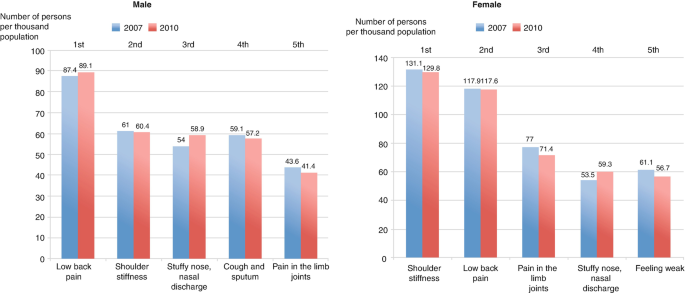
Discomfort from the shoulders to the neck that has persisted for many years.
A woman in her 40s, living in Bashamichi and working as a company employee, presented with chronic shoulder stiffness and neck pain. She has been experiencing these symptoms for over 10 years, but the pain and discomfort have become unbearable, especially with recent teleworking. Her condition has worsened to the point where it sometimes wakes her up at night, prompting her to seek treatment.
Specifically, her symptoms have become more severe over the past two years. She has tried various treatments such as massage, osteopathy, and chiropractic care. Some places she visited only once, while others she visited multiple times. However, the relief was only temporary, lasting no more than a few days. Chiropractic care provided relatively longer-lasting relief, so she continued to visit regularly for a while, but improvement plateaued. As a result, she decided to try a different chiropractor and came to this newly opened clinic near her home, as she honestly explained.
[Initial Symptoms]
Interview: Chronic pain from the shoulders to the neck. During work, the tension spreads from the back to the shoulder blades, causing her to stretch or rotate her neck to cope with the discomfort. The symptoms are more severe on the right side (approximately 70% on the right and 30% on the left). Moving a bit provides some relief, and going out reduces her awareness of the pain. (She often experiences discomfort during meals out and tends to rotate her neck while seated, which causes her partner to comment that she seems restless.) She does not report any numbness or headaches.
Visual Inspection: In standing posture, there is a slight elevation of the right shoulder. In lateral view, the neck is slightly forward-tilted, the shoulders are rounded forward, and there is increased thoracic kyphosis (increased curvature of the thoracic spine). This posture is further emphasized when seated, suggesting significant strain due to poor posture during desk work.
Static Palpation: Tension is noted in the superficial trapezius muscle, as well as in the deeper muscles including the levator scapulae, rhomboid group, and sternocleidomastoid muscle (especially the clavicular head).
Motion Palpation: There is a slight restriction in right cervical rotation, but no pain is induced. There is no restriction in flexion or extension, and the range of motion is within normal limits. There is a restriction in right lateral flexion, and during right shoulder abduction, she reports a sensation of tightness in the shoulder, though not pain.
Orthopedic Tests: Cervical Compression and Distraction Tests (negative) / Morley Test (negative but with tenderness) / Barré-Liéou syndrom Test (negative)
[Treatment Content]
Based on the examination results, it was determined that the risk management was low, so active treatment was implemented. First, relaxation techniques (STT) were performed on the muscles from the neck to the back to loosen the muscles causing the symptoms. Subsequently, muscle adjustments related to posture were performed to help maintain a good posture that does not strain the neck and shoulders.
However, fundamentally, the muscles involved in posture, movement, and maintaining positions are attached to joints. Therefore, without improving skeletal position and joint range of motion, fundamental improvement is not possible. Hence, approaches to the joints (referred to as adjustments or mobilizations in chiropractic) were applied.
Due to the tendency for loss of cervical lordosis, cervical mobilizations and adjustments to C3/C4 and C6/C7 were performed to restore cervical curvature.
Since the shoulder joint was anteriorly displaced, shoulder joint adjustments were made, and adjustments to the acromioclavicular and sternoclavicular joints were carried out.
The scapulothoracic joint (scapula and rib) exhibited abduction displacement (scapula moved outward), causing the shoulder to move forward and resulting in rounded shoulders. Therefore, muscles responsible for scapular abduction were relaxed, and posterior displacement of the right 6th and 7th ribs was corrected through adjustments.
[Prognosis]
First Session: The patient’s condition was much improved post-treatment, reporting that her shoulders and neck felt lighter, and her posture improved.
Second Session (1 week later): She noted a return of symptoms compared to immediately after the previous treatment but rated it as 6 out of 10.
Third Session (10 days later): Further improvement was noted after the second session, and even after 10 days, the symptom index was reduced to about 3.
Fourth Session (2 weeks later): Despite being busy at work, she continued the exercises I recommended and maintained a similar condition to the previous session. It was determined that treatment intervals could be extended.
Fifth Session onwards (monthly): At her request, she transitioned to maintenance phase, with preventive treatments once a month, which have been effective in maintaining her condition.

[Practitioner’s Opinion]
Her symptoms were typical of chronic shoulder stiffness. Since her issues were relatively simple, caused by muscle tension, the symptoms improved steadily with repeated treatments.
However, despite previous treatments, why hadn’t her symptoms improved? Upon listening, it became clear that my approach was entirely different. Previously, treatments focused mainly on increasing muscle flexibility, i.e., relieving stiffness. My approach of improving from the joints was new to her. She listened attentively to my explanations, showing a strong desire to truly alleviate her symptoms and prevent them from recurring.
While her symptoms are common, chronic conditions are often deeply tied to lifestyle habits. Identifying the root cause quickly is crucial. Her case represents a common pattern in modern society. With increased teleworking since the COVID-19 pandemic, reduced movement leads to decreased muscle flexibility and blood flow, resulting in chronic symptoms.
Specific Issues:
- Limited Range of Motion in the Cervical Spine (C4–C6) accompanied by a right posterior-lateral displacement.
- Loss of Cervical Lordosis (straight neck).
- Elevation and Abduction of the Right Scapula, caused by hypertonicity in the levator scapulae, rhomboid minor, infraspinatus, and subscapularis muscles.
- The right posterior displacement of the 5th to 7th ribs and anterior displacement of the right shoulder joint, likely resulting from hypertonicity in the pectoralis major and minor muscles.
If left untreated, chronic symptoms can progress to acute conditions like back strains or stiff necks and further to neurological symptoms such as intervertebral disc herniation.
To reduce the likelihood of future diseases, it’s essential to receive well-considered treatments to prevent pre-illness conditions. For those suffering from similar symptoms, my clinic is located 1 minute from Bashamichi Station on the Tokyu Toyoko Line, 8 minutes from Nihon-Odori Station, 7 minutes from JR Kannai Station, and 12 minutes from JR Sakuragicho Station.